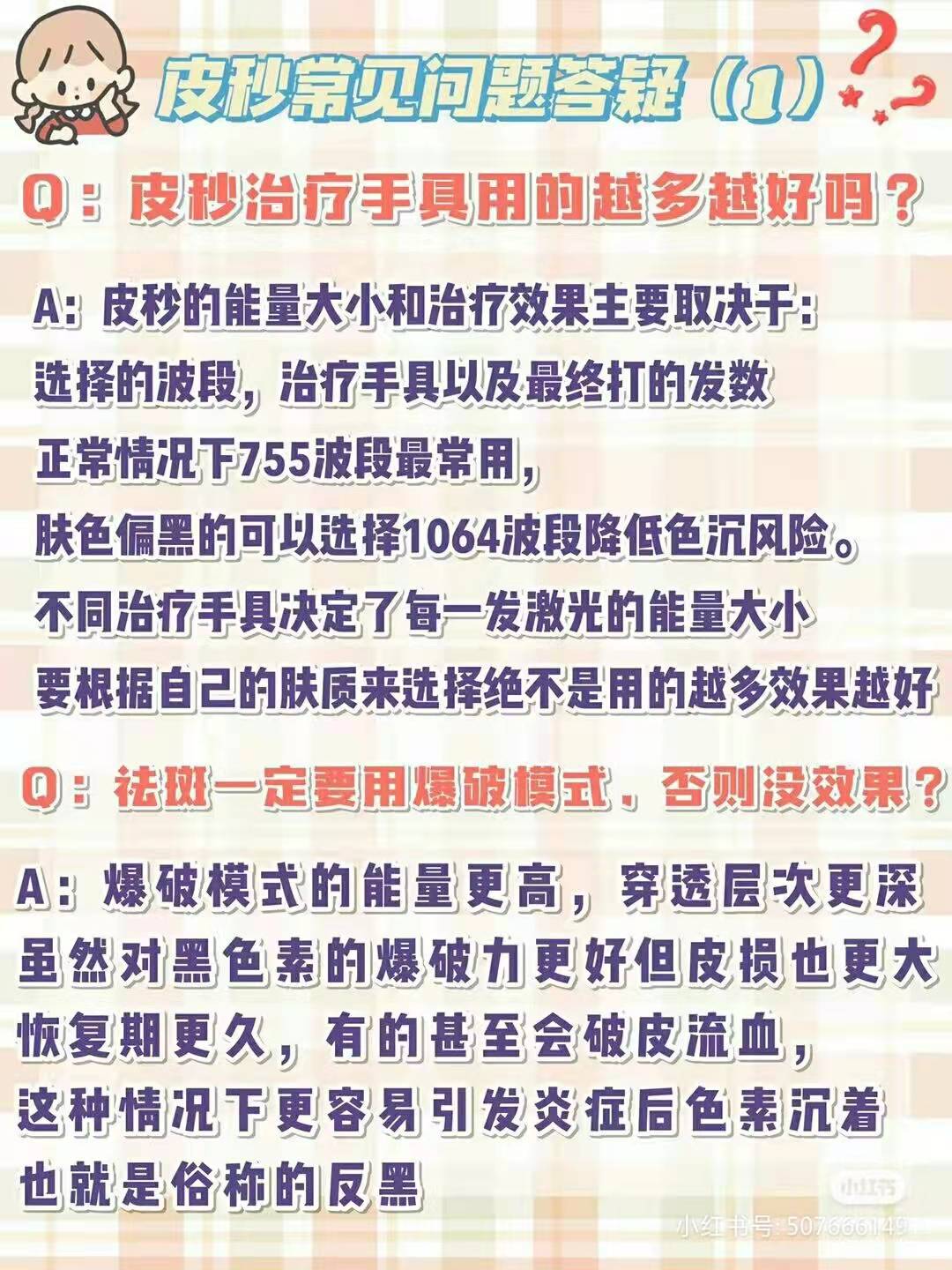+ holographic diffractive lenses
When ordinary Q-switched lasers are helpless against stubborn color spots, the "ultra-picosecond" relies on the pulse width of one trillionth of a second (1/100 of traditional lasers) and pressure wave effect achieve breakthrough progress.
Holographic lens technology
#: Pigment particles are shattered into dust.(Traditional lasers are fragments), metabolism is faster;Dual-wavelength sniper
: The beam is split into a micro-focus array, which uniformly covers color spots to avoid missed shots;: Deep melasma, mole of Ota #(Such as PicoWay):
Technical differences: : Epidermal finch spots, sunburn spots Rapid blasting
-
Additional 730nm (some equipment): Red blood stains, tattoos
-
Anti-black risk: Not strictly protected from sun after surgery (Requires SPF50 +/PA +++)1064nm
-
ˇ Invalid operation: Energy setting is too low (Color spots need enough heat damage)532nm
Color spot type
ˇ Insufficient treatment course: Chloasma needs 6 - 8 times (Interval 1 month)
Pit avoidance guide:
Effect comparison table:
Traditional nanosecond laser
| Ultra-picosecond laser | Coffee spot | Easy to recur |
|---|---|---|
| Recurrence rate 30% | Brown and cyan mole | Takes more than 10 times |
| 5 - 7 removal | Tattoos | Color residue is obvious |
| Removal rate is 90% | Note: Ice application immediately after surgery can reduce redness and swelling, do not touch raw water within 24 hours, and do not scratch during the scab period. | ️️️↓↑ Things to pay attention after picoseconds!!! |
#44##43#










